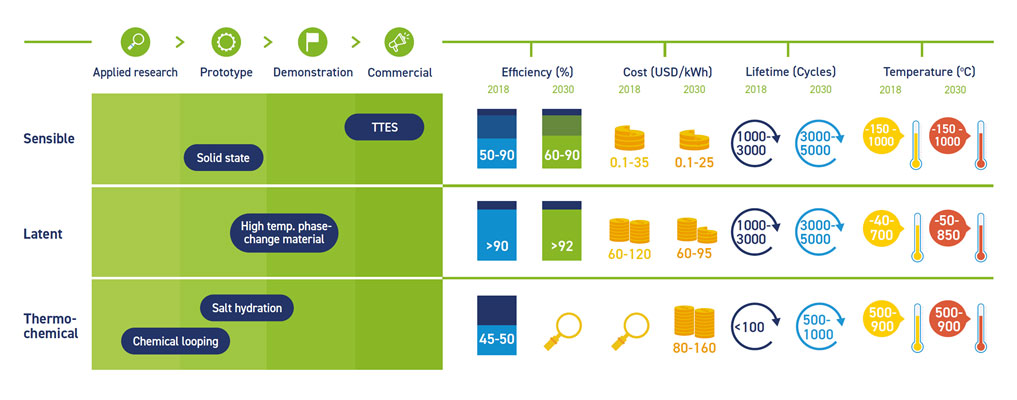Technology
Molten salt electro-thermal energy systems allow for capturing waste heat and/or excess power from solar, wind, nuclear, or other sources and storing it for peak demand, reduced fuel, or night power. These systems have a significantly smaller footprint than battery packs and do not contain any hazardous materials. They are fully inert.
THERMABLOX™
Molten salt
Molten salt electro-thermal energy systems are a grid-scale technology that can be used to store energy from any electrical or thermal source (renewable, grid, waste heat) to ensure grid reliability. These systems can provide long term backup power and load shifting/load leveling, providing 50-500KW+ power for 2-20 hours (or more). These very compact, portable, and scalable for rapid deployment palletized systems eliminate the use of toxic and reactive materials).
All current molten salt storage systems have limited temperature capability (hot tank: 585°C and cold tank: 290°C) whereas Cratus can operate at 30% higher temperature (hot tank: 740°C and cold tank: 450°C), which enables ~3x higher efficiency and output. ThermaBlox™ can be rapidly deployed. Cratus ThermaBlox™ can integrate renewable, waste heat, and backup power into a single, scalable unit to provide the lowest-cost energy storage solution.

Cratus has developed materials compatible with long term exposure to molten metal salts to produce pumps, heat exchangers, tanks, and valves for CSP molten salt thermal energy storage which are combined with sCO2 brayton cycle generator and a smart transformer, for compact, lightweight, scalable and modular energy storage in the MW-hr scale.
Core to Cratus’s advantage is its development of “encapsulated metallic phase change slurry” storage medium. Cratus’ patent pending encapsulated phase change materials more than triple the energy storage capability of molten salts, while allowing direct absorption of heat into the molten salt. They enable the use of latent heat of melting, versus only specific heat to store energy, and deliver it over a range of temperatures to allow for very high-performance transfer to sCO2 or steam generators. Cratus’s encapsulated phase change materials consists of advance silicon alloys able to deliver tremendous amounts of energy tailored between 500 and 800°C to optimize absorber and heat exchanger performance. The 10X improvement in salt thermal conductivity further enhances performance of the whole system.
In addition to be 3X smaller that current molten salt systems, Cratus’s insulated baffle single tank system eliminates the need for separate hot and cold tanks, reducing system size and cost by 50%.

Figure 1: Source – IRENA Innovation Outlook
Thermal Energy Storage technology status and innovation outlook in the industrial sector:
Long Duration energy storage is the primary need for enhanced grid reliability and integration of renewables into the power grid. Both at the microgrid and the main grid level, long duration storage is required to shift loads from times of low demand to times of high demand, to provide stability and backup power at the local level, and to smooth variable sources such as wind and solar.
Molten salt thermal energy storage competes with Diesel and natural gas backup generators and flow batteries, and can provide long duration scalable storage where terrain, lack of space, or environment conditions prevent pumped hydro.

Figure 2: Source – IRENA Innovation Outlook

